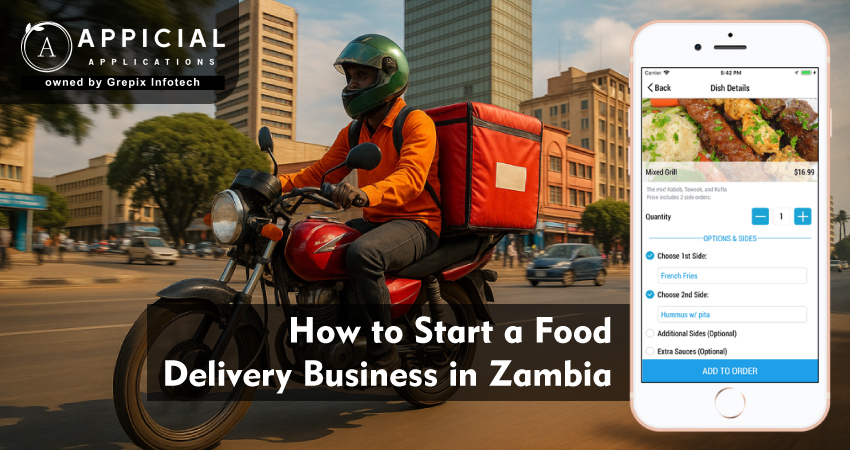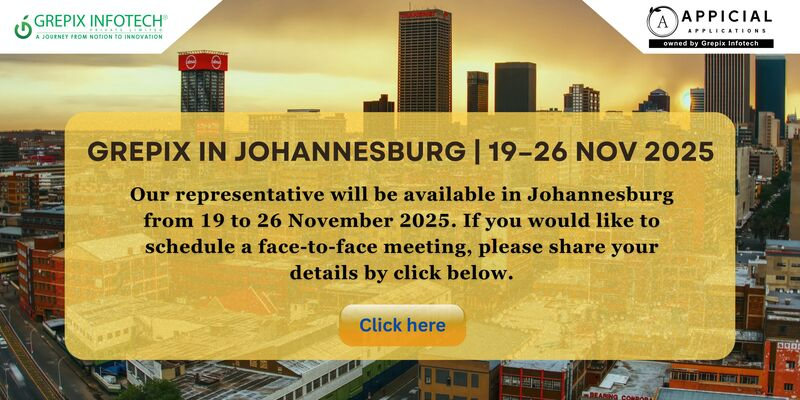
How to Start a Food Delivery Business in Zambia
Walk through Lusaka at 7 p.m., and you’ll notice something interesting. Traffic jams choke the main roads. People are tired after long hours. Restaurants are full, yet many younger professionals are scrolling on their phones, ordering food instead of queuing.
Zambia is not yet flooded with food delivery platforms like South Africa or Nigeria. There’s no dominant player similar to Grubhub Delivery or Uber Eats Delivery. That absence is actually the biggest opportunity. Whoever builds a trusted Food Delivery App in Zambia today could easily become the go-to brand in a few years.
So, how can an entrepreneur actually pull this off? Let’s break it down.
Food delivery is no longer just a luxury in Zambia’s urban centers, it’s becoming part of everyday life. This blog explains why investing in Food Delivery App Development makes sense, what features matter, and how entrepreneurs can navigate challenges. It also explores real costs, timelines, and how a Food App Development Company like Appicial Applications supports startups.
Why Invest in Food Delivery App Development in Zambia?
There are a few obvious reasons and a few hidden ones.
1 Lifestyle shifts
Zambian cities are growing fast. Lusaka’s population is already over 3 million, and daily life is busy. Eating out isn’t always convenient. Ordering in is easier.
2 Mobile-first nation
Over 10 million mobile connections exist in Zambia, and more people rely on apps for everything from banking to ride-hailing. A Food Delivery App fits into that ecosystem naturally.
3 Limited competition
Unlike Kenya or South Africa, Zambia doesn’t yet have a dominant DoorDash food delivery app or Grubhub food delivery equivalent. It’s a blank slate.
4 Post-pandemic habits
During COVID-19, takeaways and informal deliveries grew. That habit stayed. Customers now expect speed and convenience.
5 Revenue potential
Projections suggest that Zambia’s urban food delivery segment could grow at 15–20% annually. In real numbers, a Lusaka-based app handling 1,000 daily orders at an average $4 ticket size could generate $120,000 in monthly transaction volume. That’s without expansion.
What are the Must-Have Features for a Food Delivery App?
If the app doesn’t feel smooth, customers won’t come back. Here’s what’s essential:
For Customers
- Quick sign-up with mobile number or email
- Menu browsing with photos and pricing
- GPS-based restaurant suggestions
- Secure payments (mobile money, debit cards, cash on delivery)
- Live tracking (borrowed from Uber Eats Delivery style apps)
- Offers and loyalty rewards
For Restaurants
- Real-time menu updates
- Order alerts and acceptance tools
- Sales dashboards for insights
- Customer feedback loops
For Drivers
- Navigation with shortest routes
- Easy status updates (picked up, en route, delivered)
- Payment history and weekly earning reports
For Admin
- Centralized logistics management dashboard
- Analytics on orders, regions, and revenue
- Customer and driver support tools
These are the basics. Later, advanced features like AI-powered suggestions or subscription models can be added.
What is the Technology Stack and Architecture?
Let’s get a bit technical, because this matters for scaling.
- Frontend: Flutter or React Native (works on Android & iOS with one codebase).
- Backend: Node.js or Django with cloud hosting.
- Database: PostgreSQL or MongoDB.
- Real-time tracking: Firebase or socket-based systems.
- Payments: Airtel Money, MTN MoMo, Zamtel, plus card integration.
- Notifications: Push via Firebase.
With this stack, a Zambian entrepreneur can build food delivery app solutions that match the performance of global apps like DoorDash Delivery App.
What are the Challenges and Market Gaps in Zambia?
Starting a business here isn’t without hurdles.
Roads and delivery efficiency
Not all areas have good infrastructure. Deliveries in Lusaka might be quick, but smaller towns can face delays. Motorcycles and bicycles are often the best vehicles for last-mile delivery.
Payment systems
Yes, mobile money is popular, but cash on delivery is still essential. Ignoring COD could lose 30–40% of customers.
Trust and awareness
Some people hesitate to try a new app. Offering discounts, reliable support, and referral bonuses can break barriers.
Restaurant onboarding
Convincing restaurants takes effort. Owners want proof of sales growth. Case studies showing a 25% increase in revenue after joining a Food Delivery App help.
Logistics manpower
Recruiting and training enough drivers is critical. A 1:10 driver-to-restaurant ratio works in the early stages.
But here’s the gap: no “best food delivery company” exists yet. Whoever solves these challenges first will dominate.
Also Read: How to Start a Profitable Logistics Business in Mali
What is the Estimated Development Cost & Timeline?
Numbers matter, so let’s put projections on the table.
- Basic MVP: $25,000 – $40,000 (customer, driver, restaurant apps + admin panel). Timeline: 3–5 weeks.
- Full solution with advanced analytics, loyalty, and AI: $60,000 – $90,000. Timeline: 6–9 weeks.
Converted, that’s about 650,000 – 1.5 million Zambian Kwacha.
Break-even projections:
If an app secures 500 daily orders within six months, each averaging $5, that’s $75,000 in monthly order volume. With a 20% commission model, revenue is $15,000 monthly. At that pace, the initial investment could be recovered in 12–18 months.
How Appicial Applications Can Help?
Scaling a food delivery startup isn’t just about code. It’s about reliable partners.
Appicial Applications is a Food App Development Company that has worked across markets like logistics, taxi, and on-demand services.
Here’s what they bring:
- Tailored food delivery platforms designed for Zambian usage.
- Scalable architecture that grows from Lusaka to Ndola or Kitwe.
- Support with integrations like MTN MoMo or Airtel Money.
- Long-term maintenance and updates.
Entrepreneurs who create food delivery app solutions with Appicial can focus on operations while the tech side stays reliable. At Appicial Applications, we leverage state-of-the-art technologies and tools to build scalable food delivery apps that drive tangible business results in the long run.
Conclusion
Zambia’s food delivery industry is at the ground floor. The demand is there, but the supply is still catching up.
Urban professionals, students, and families are ready to embrace online food delivery apps. Restaurants are hungry for extra revenue streams. Drivers are seeking income opportunities. The ecosystem is waiting for someone to connect it.
By acting early, entrepreneurs can position themselves like DoorDash Food Delivery or Grubhub Delivery did in their early days, small city pilots that scaled nationally.
With the right execution, Zambia’s next big tech brand might just be a homegrown DoorDash delivery App equivalent. And it could start with one visionary building a Food Delivery App in Lusaka today.
FAQs
Author's Bio

Vinay Jain is the Founder at Grepix Infotech and brings over 12 years of entrepreneurial experience. His focus revolves around software & business development and customer satisfaction.
Back to blog list





